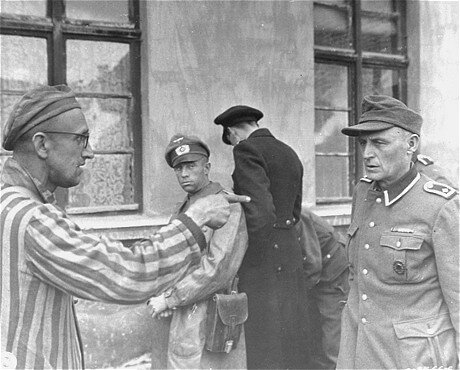Multimedia
In conjunction with her work as an author, Ellen Hampton is an active historian working on projects in all media. Her research and writing has informed broadcast interviews, documentary films, historical exhibitions, journalism, and more. Her latest projects are about the American Revolution in Paris, leaning into the 250th anniversary in 2026.
The American Revolution in Paris
As a Rochambeau Chapter DAR project, we have identified 47 sites linked to the American Revolution in Paris, from the residence of John Paul Jones to the statue of Benjamin Franklin, and put them on an interactive map for easy consultation. Follow the link and click on the pin for a photo and brief identification of each site.
Revolutionary Audio Tours of paris
With VoiceMap.me, we have created three walking tours of Paris based on revolutionary themes. The first, Benjamin Franklin’s Paris: a guide to the revolutionary’s life in the city, is here in English and ici en français. On this free 45-minute walking tour, you’ll be guided through late-1700s Paris as if by Franklin himself, and hear about the City of Light that he came to know and love. You’ll also see the many monuments dotted around the 16th arrondissement that commemorate the first partnership of the newborn United States with its sister republic-to-be, France. Many thanks to Mark Primmer, of the Benjamin Franklin Post of the VFW in Paris, and to Yorick de Guichen, of the Society of the Cincinnati, for providing Franklin’s voice in English and French. Nb. If you aren’t in Paris, you can listen virtually and dream!
Between Two Revolutions: the Marquis de Lafayette tour takes you through the center of Paris, while he explains the key role of the Palais Royal during revolutionary times, and ends at his last residence. And the tour Lessons in History: A Guide to Thomas Jefferson’s Time in Paris follows a path through Saint-Germain-des-Près while Jefferson explains the influence of the American Revolution on that of the French. Claude Urraca does the voice of the Marquis de Lafayette, and the former dean of the American Cathedral in Paris, Zachary Fleetwood, takes on the voice of Jefferson. Many thanks to them both!
Doctors at War discussion with the Alliance Française of Washington DC
With Paul Woodadge on WW2TV: how did doctors cope with the Nazi Occupation of France?
Storytime in Paris podcast with Jennifer Fox on Women of Valor: the Rochambelles on the WWII Front
How did World War I change medicine? Watch my interview with Dr. Will Haynes of the Watkins Museum of History in Lawrence, KS.
Shepherd.com offers author-curated book selections on specific subjects. Here are mine:
Five best non-fiction books on women in World War II.
Documentary: The American in Paris
Directed by Antony Easton and produced by Passion Pictures, The American in Paris takes a comprehensive look at the role of The American Hospital of Paris during WWI. The 57-minute documentary brings to life the volunteers who dedicated their time—and for some, their lives—to helping France in the desperate years of trench warfare. Using archive footage and photographs, as well as interviews with historians and hospital officials, the film has toured France and the United States since its release in June 2017.
View the documentary in full on the American Hospital of Paris Youtube channel.
NBC Nightly News reported on the dramatic WWI history of The American Hospital and its remarkable volunteers. See the report here.
Exhibition: Bearing the Torch
Bearing the Torch: the American Hospital of Paris in the First World War, a traveling exhibition of panels, examines the hospital’s remarkable role running a 600-bed military hospital in a former boys’ school in Neuilly. Before the U.S. entry into the war in 1917, thousands of Americans came to France to serve a cause they called humanity. Some were doctors and nurses, many others were college students who volunteered as ambulance drivers and social workers. They brought clothes and medicine, ambulances and airplanes, but most of all, they brought helping hands to a country in deep need. History may not remember them, but France has never forgotten. Opened in April 2017.
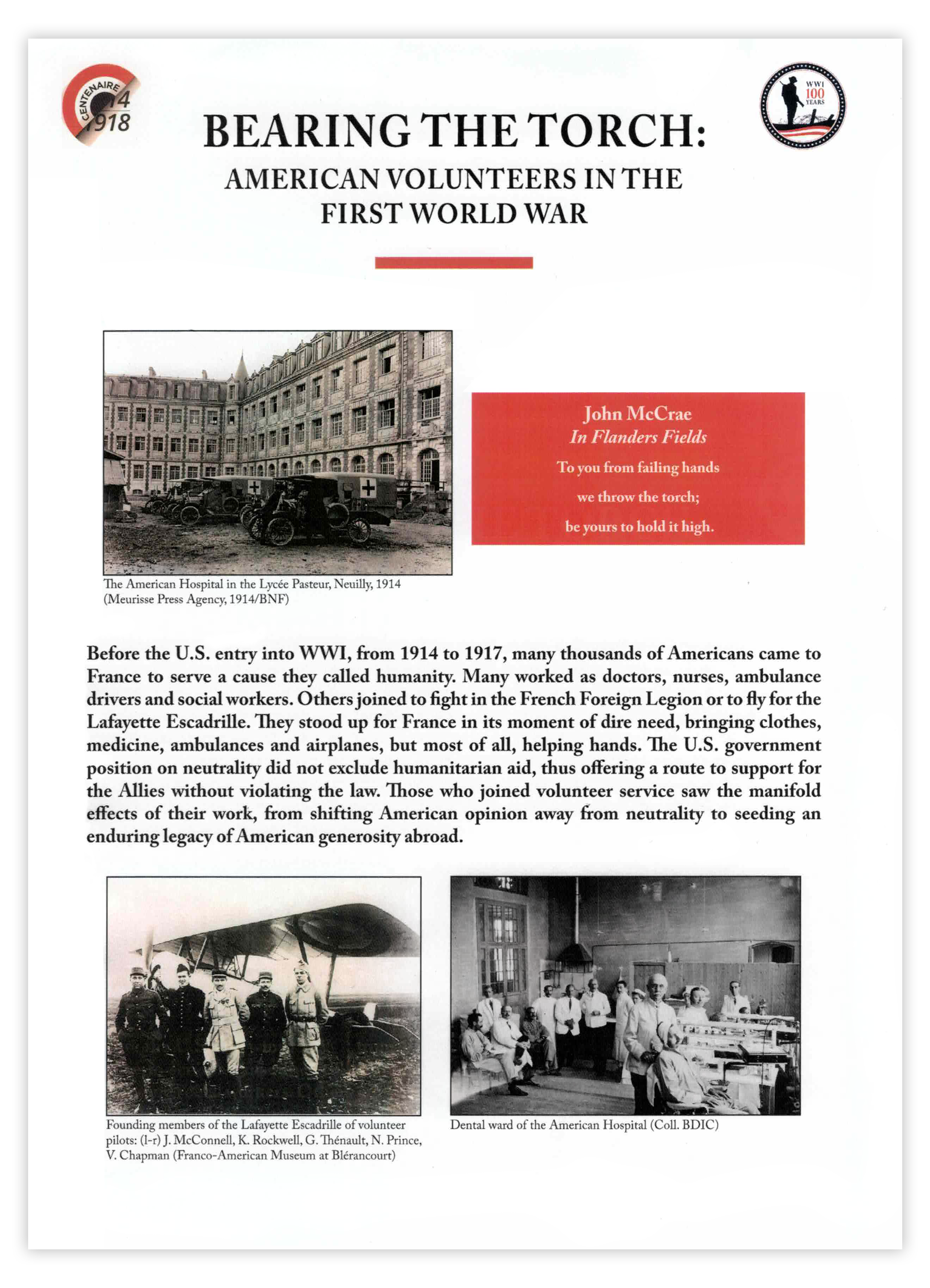
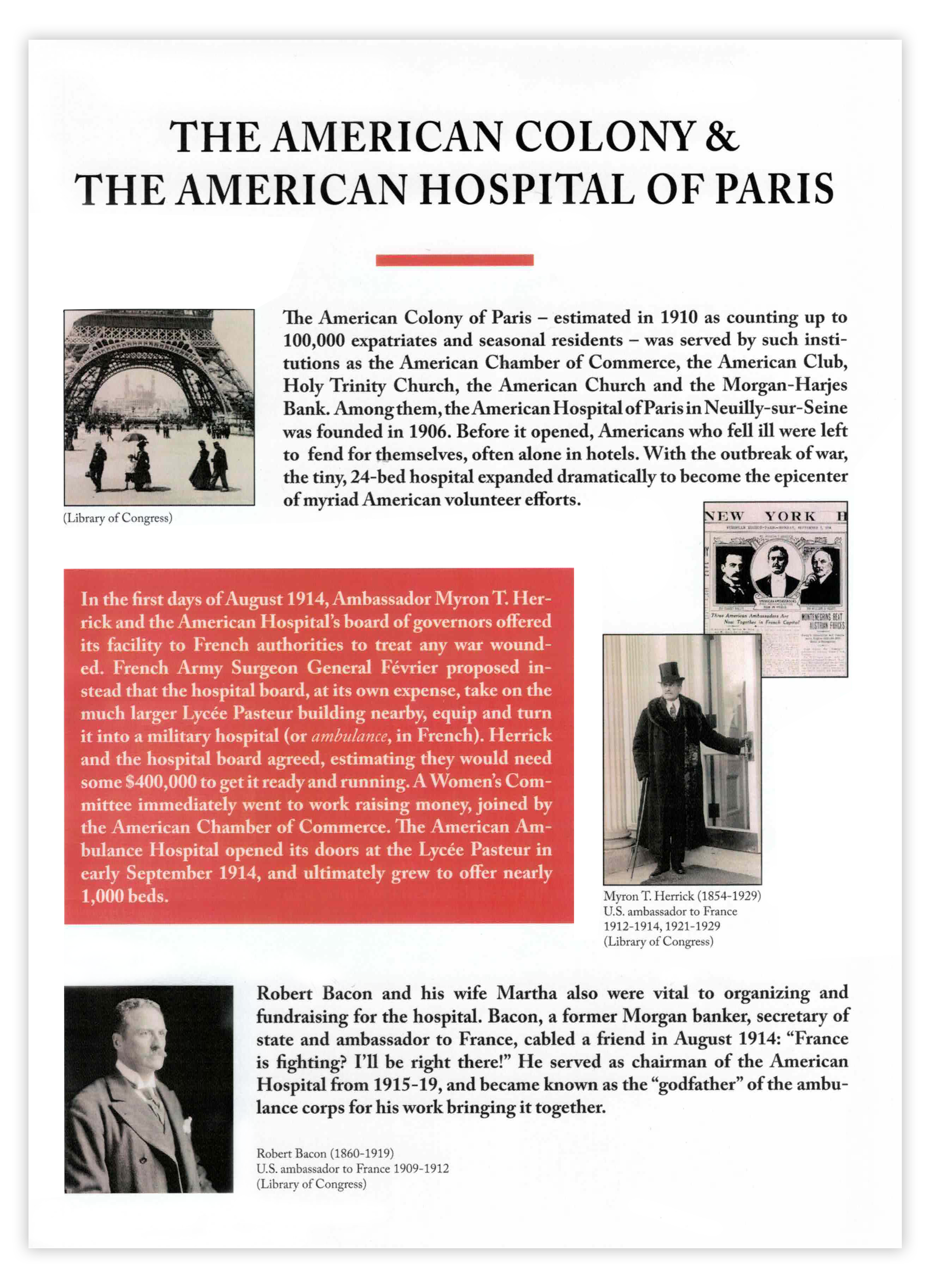
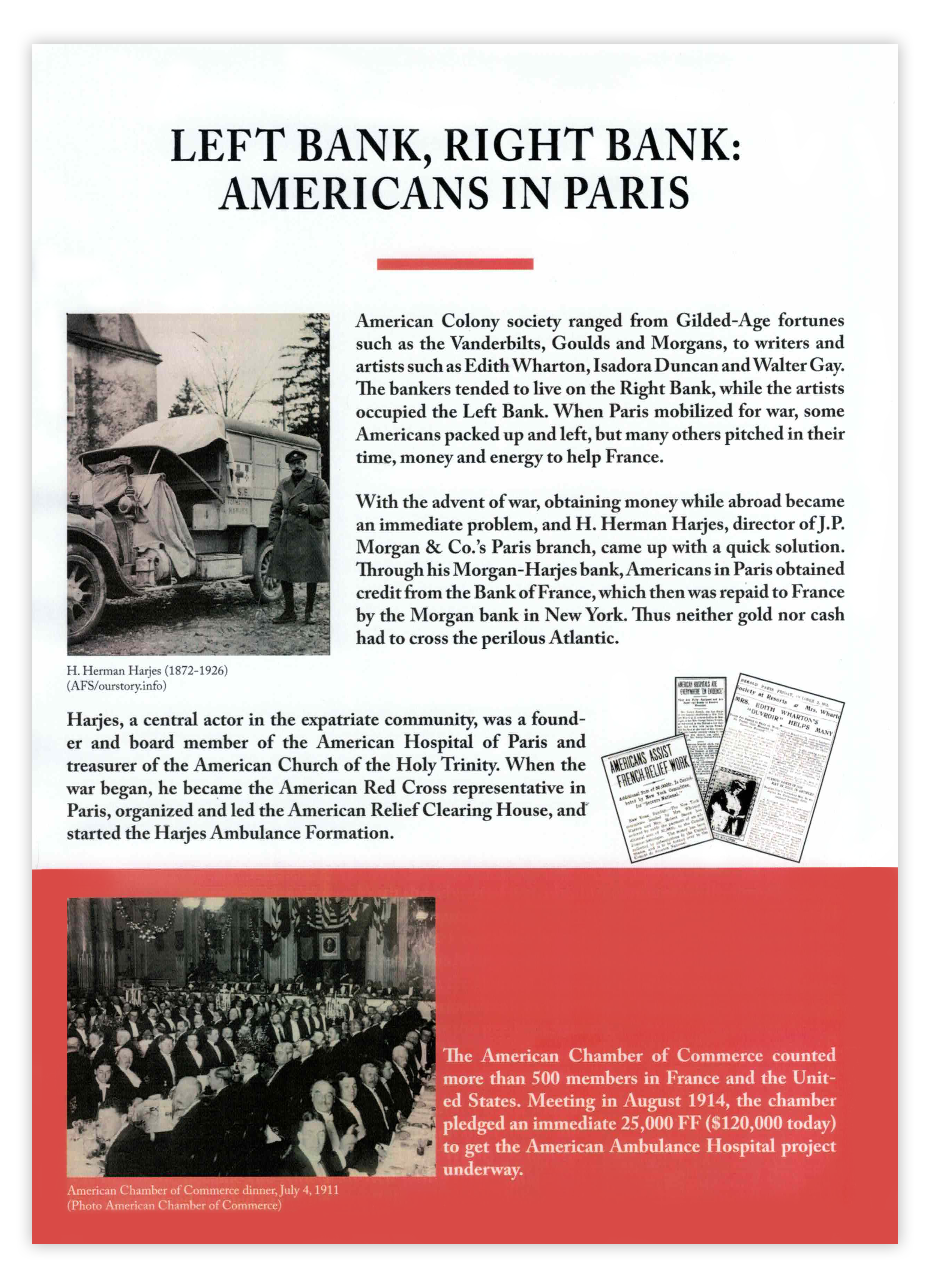
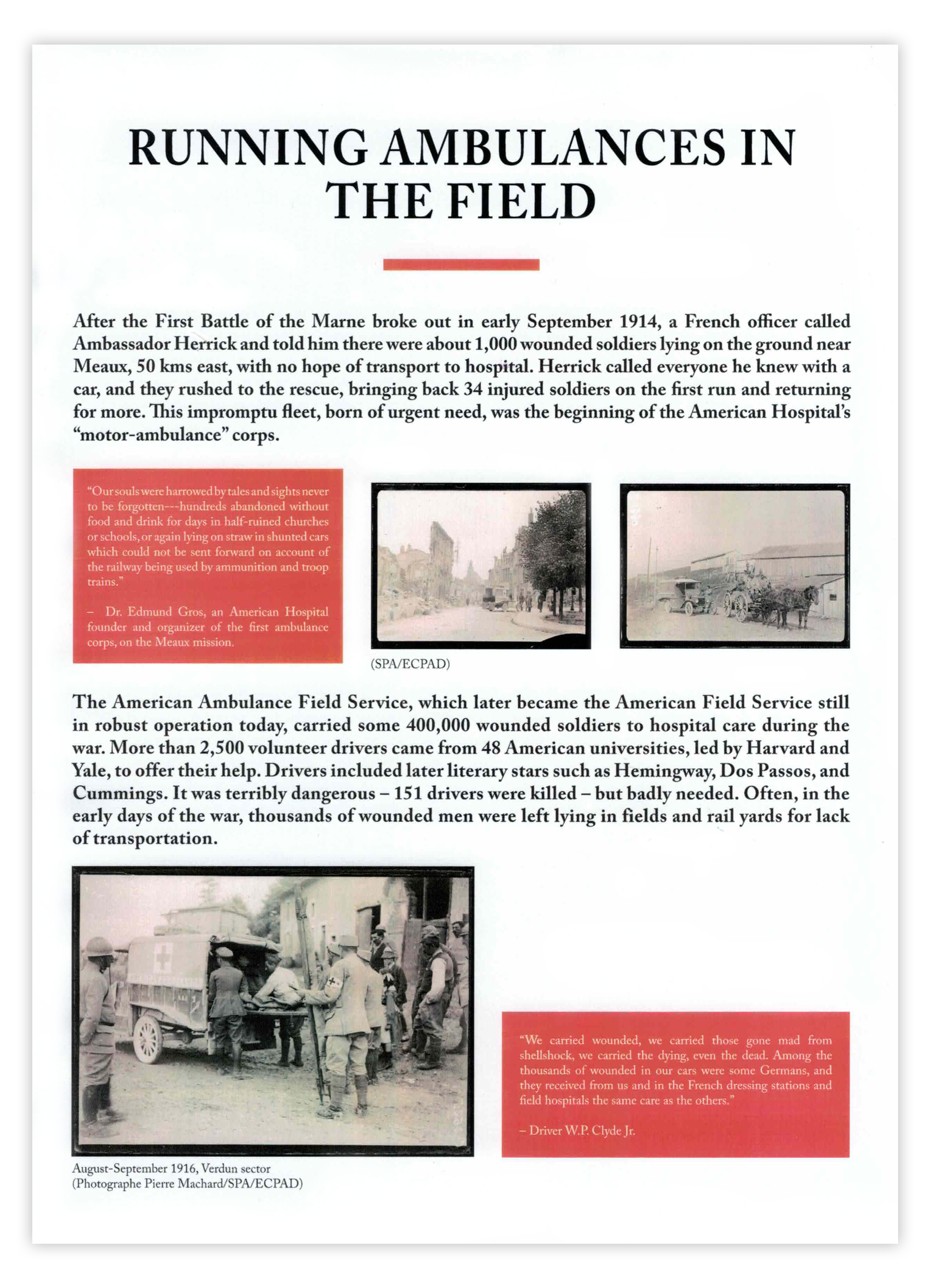
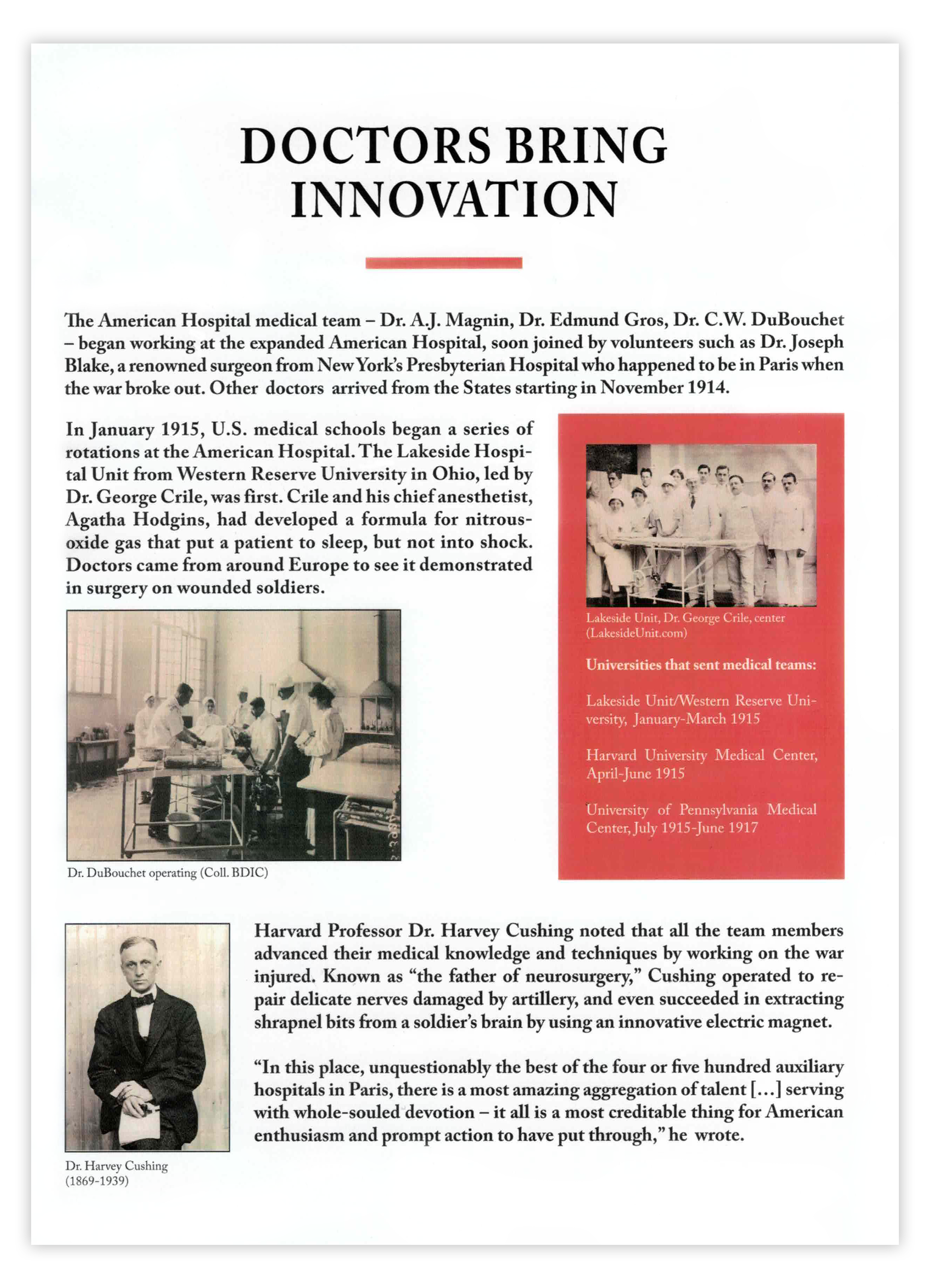
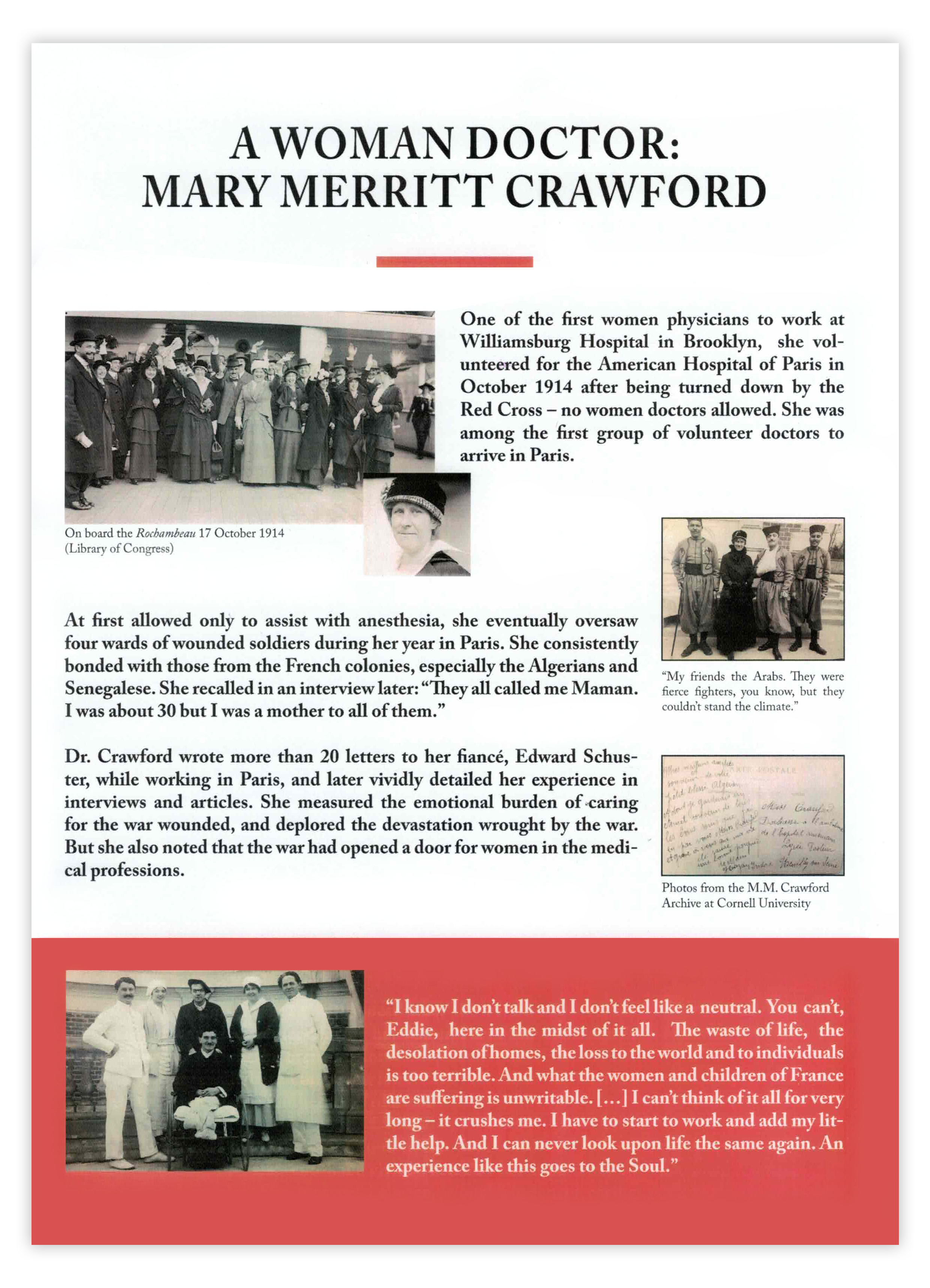
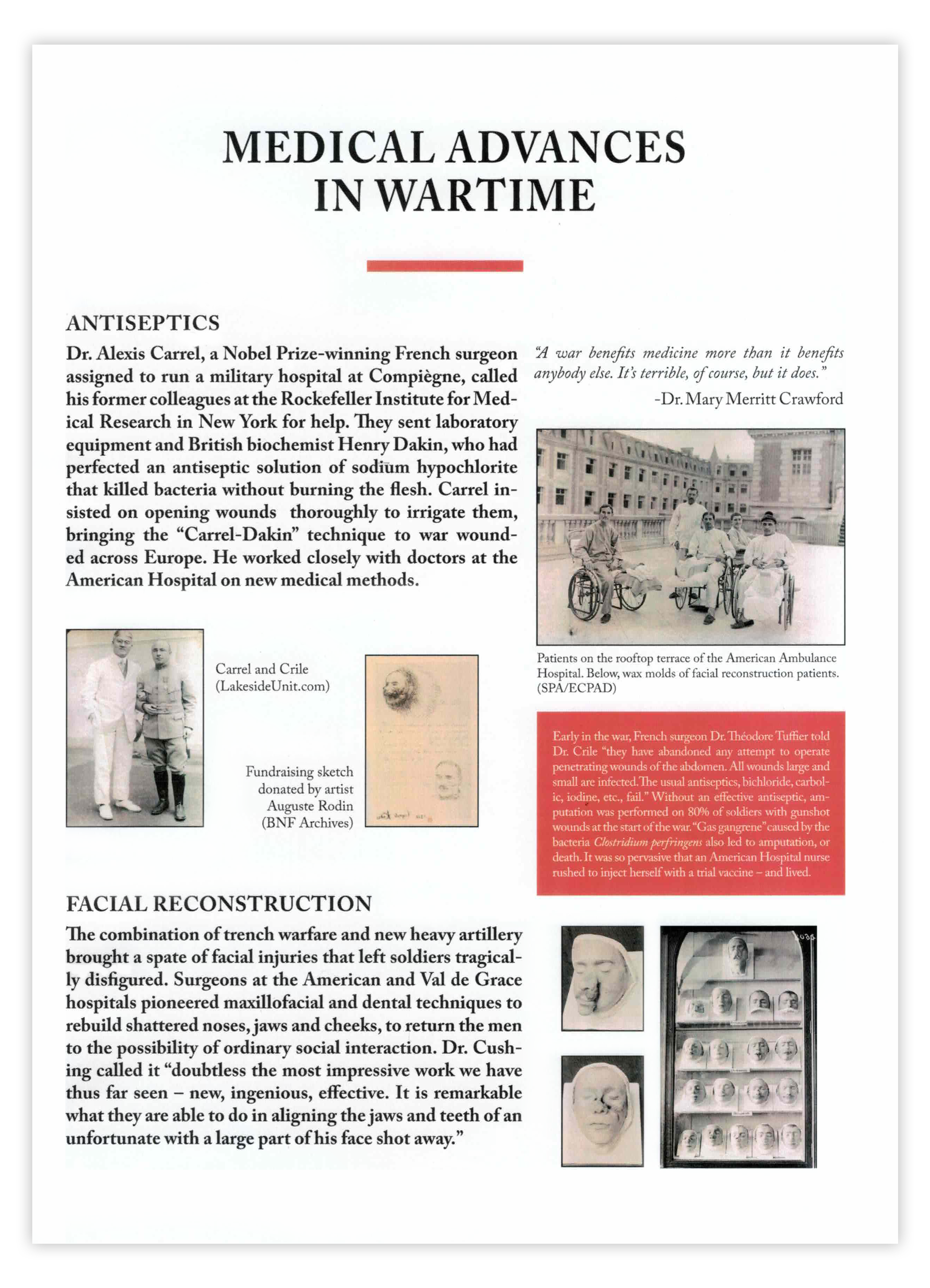
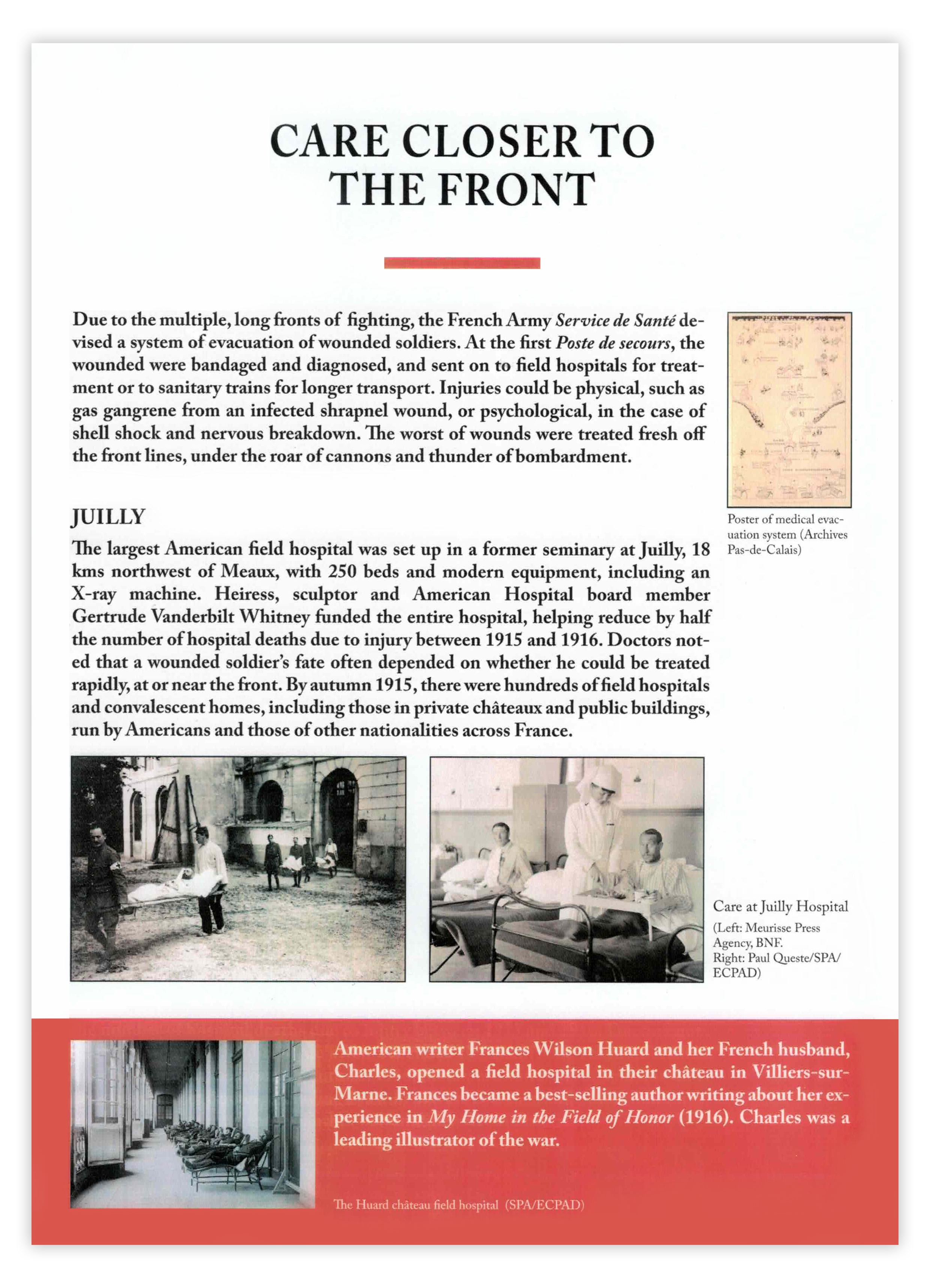
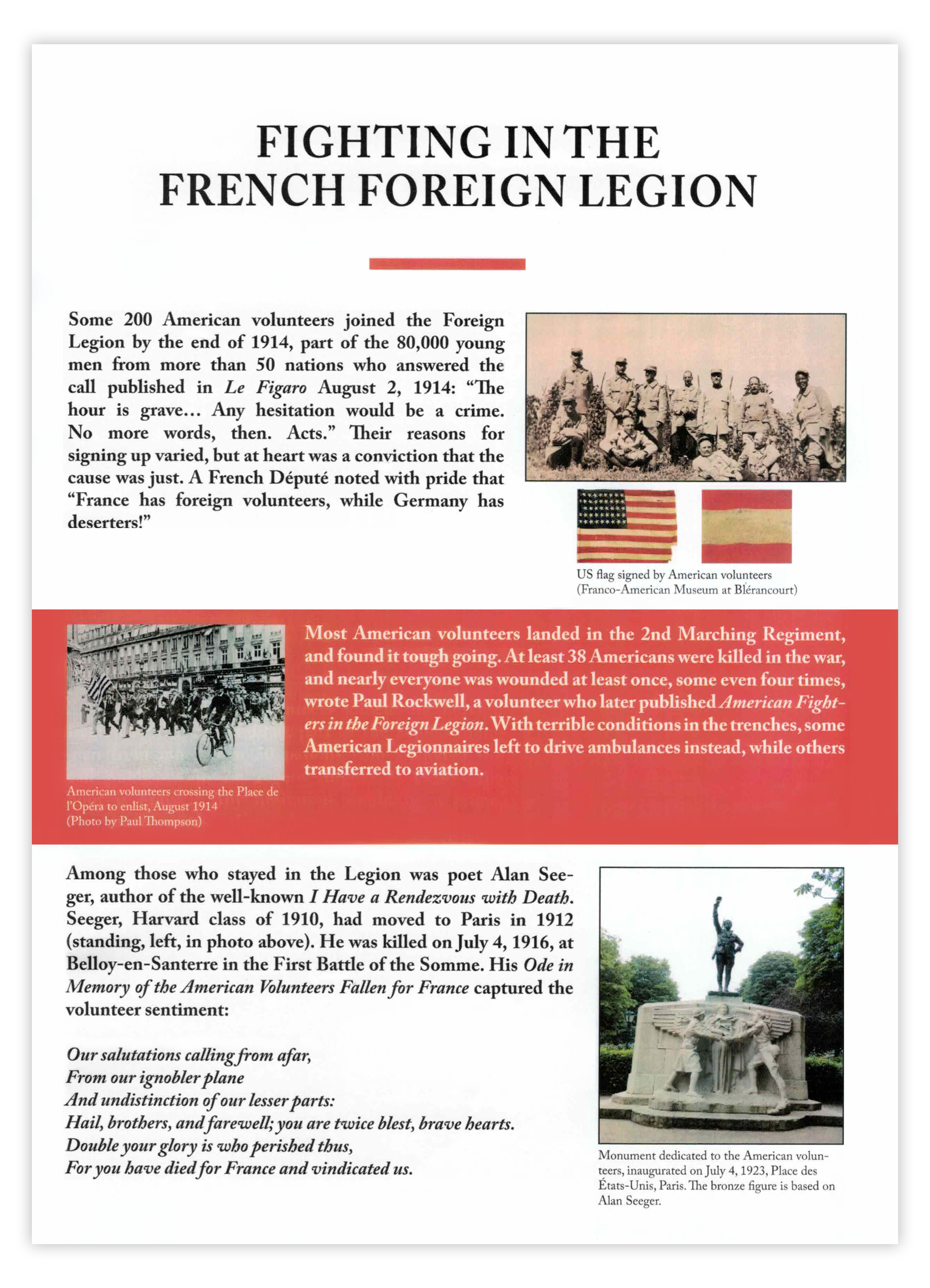

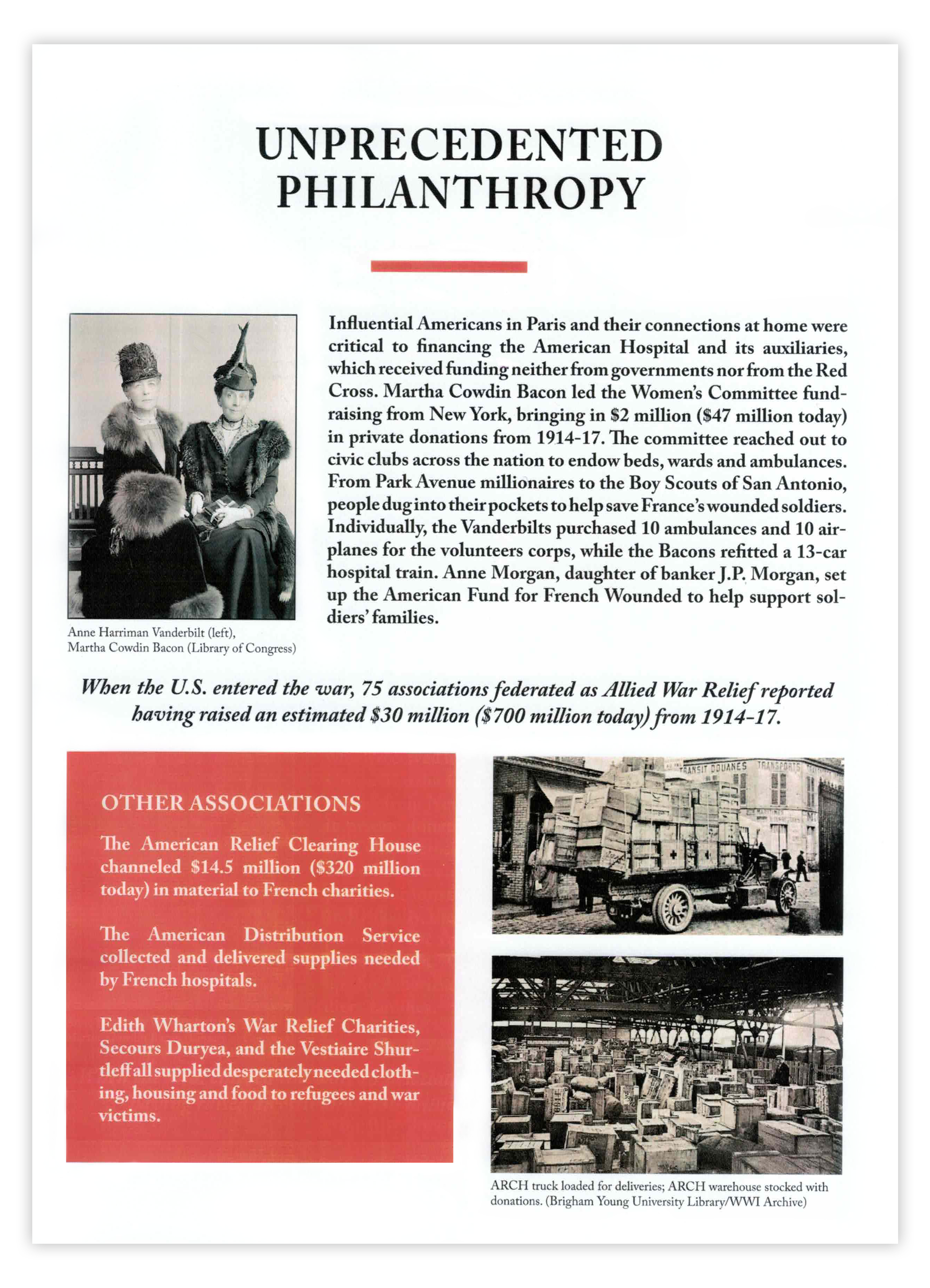
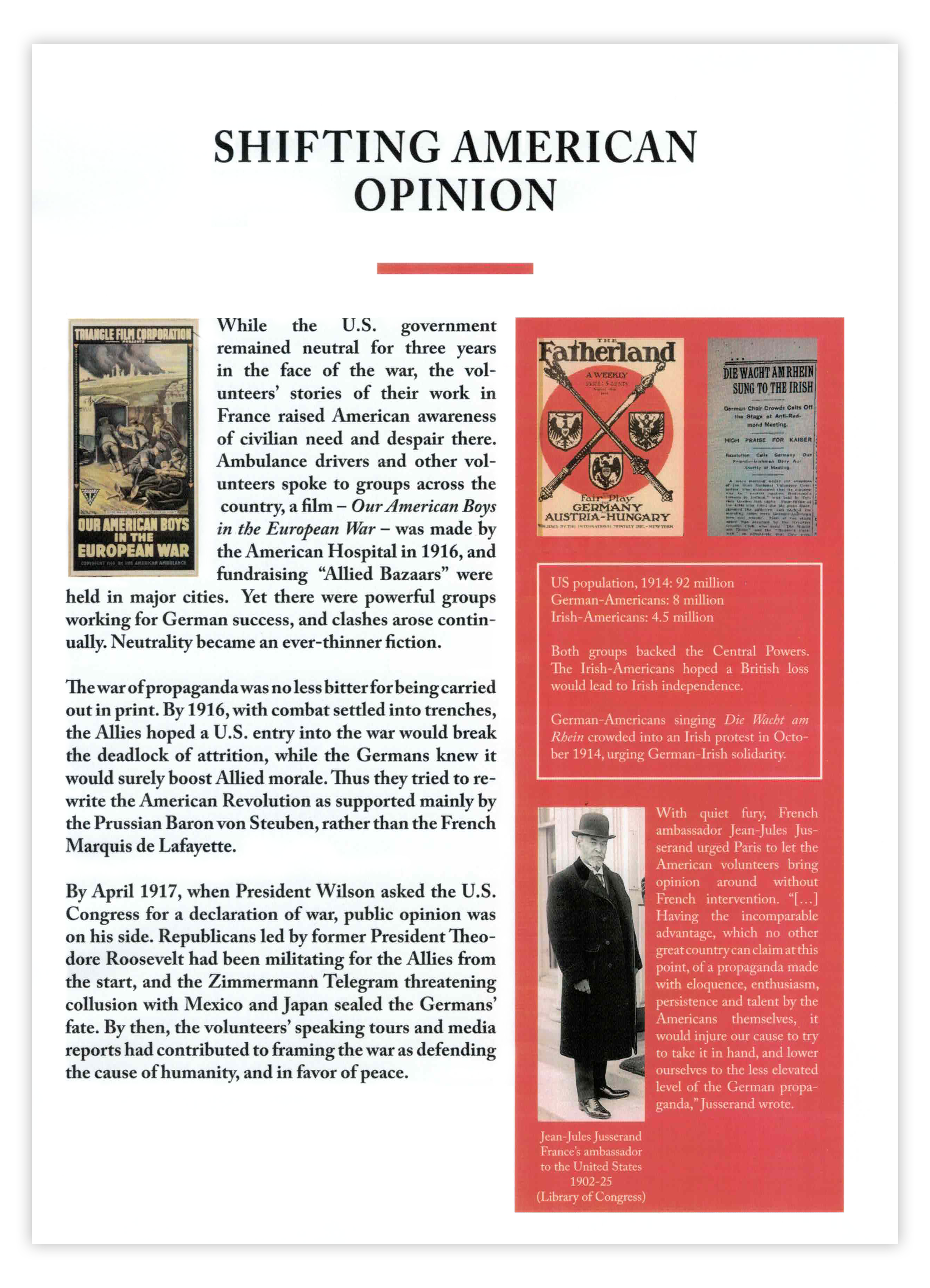
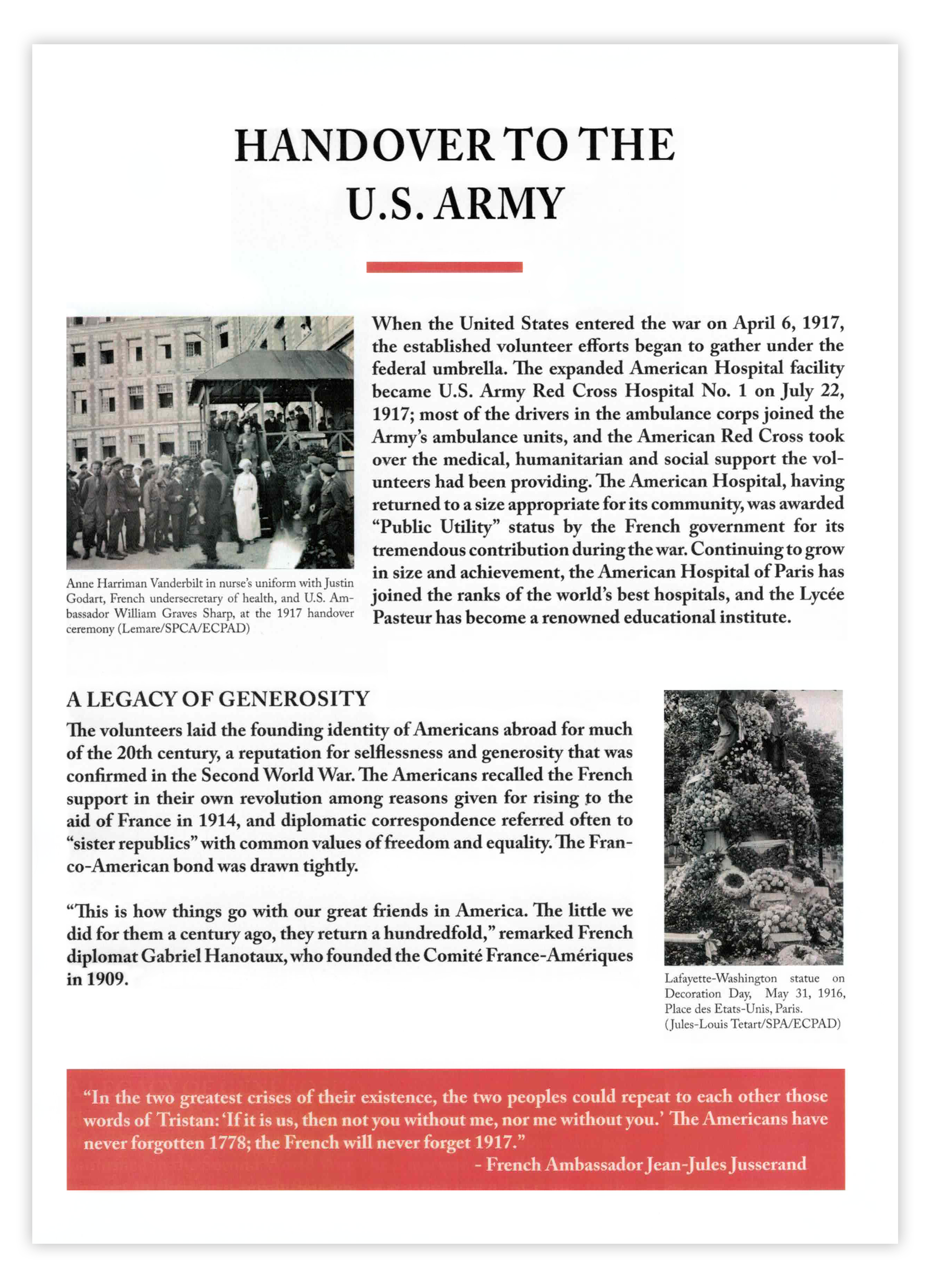
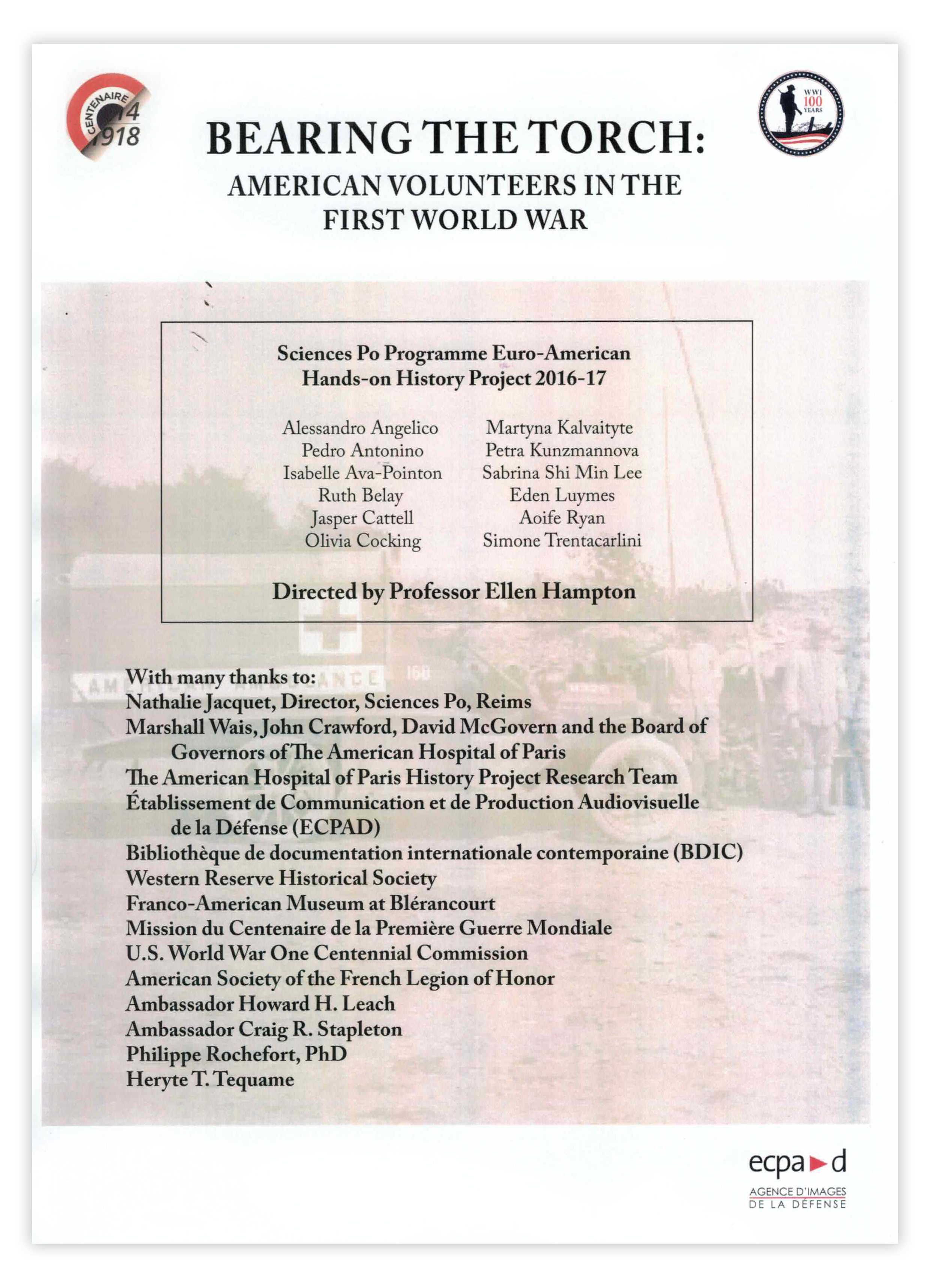
Recent Articles
Writing about historical events and bringing forward their connections to the present is a great pleasure.
OCTOBER 2022 MILITARY HISTORY MAGAZINE
Commemorations for France’s Beloved General Leclerc
France holds dear a handful of heroes from World War II, among them towering Gen. Charles de Gaulle, dashing aviator Antoine de Saint-Exupéry (author of “The Little Prince”) and wily Resistance Colonel Henri Rol-Tanguy. But in the long memory of postwar generations the nation’s deepest affection lies with Gen. Philippe Leclerc de Hauteclocque.
Hoevelhof Mayor Michael Berens and Verrières-le-Buisson Mayor François Guy Trébulle at August 29, 2021 ceremony
AUGUST 2021 MILITARY HISTORY MAGAZINE
Eighty Years Ago, Honoré d’Estienne d’Orves was executed by firing squad. Today his memory stands for reconciliation.
Count Honoré d’Estienne d’Orves followed a classic path for the son of a noble French family: top schools to the elite Polytechnique, naval officer to ship commander, practicing Catholic to marriage and five children. His profile was a perfect match to those the ultra-conservative Vichy government wanted on its side during the 1940-44 Nazi occupation of France. So when the German authorities stood d’Estienne d’Orves in front of a firing squad and shot him dead on Aug. 29, 1941, it was also a warning to the conservative classes who had been willing to play Marshal Philippe Pétain’s game of collaboration up to then. If they could kill d’Estienne d’Orves, no one was out of range.
JULY 2021 MILITARY HISTORY MAGAZINE
‘Circle of Iron and Fire’: Americans in Paris during the 1870-71 Franco-Prussian War
The 1870–71 war between France and Germany was the first, but remains the least remembered, of the archrivals’ terrible modern wars. Even less attention has been paid to the Americans it drew across the Atlantic to fight, observe, mediate, run a field hospital and, before it was over, endure two grinding sieges and pounding bombardment in Paris. Not every American in the French capital stuck it out, but Elihu B. Washburne, minister of the American Legation, considered it his duty to look out for those of his countrymen and women trapped in “that circle of iron and fire.”
Published April 2020 by The Daily Beast
April 2020 tHE daILY beAST
The Triumph of Survival
In January 1944, when a group of 5,500 French prisoners arrived at Buchenwald concentration camp outside Weimar, Germany, among them were a dozen doctors, arrested and deported for resistance activity in occupied France. Some were assigned initially to grueling work in the stone quarry or digging tunnels for an underground rocket assembly plant, but it wasn’t long before the camp’s clandestine resistance group got them moved into medical service in the camp clinics. They would help carry out the group’s declared goal of defeating the Nazi extermination project: to survive, and to keep as many prisoners alive as possible.
Published January 2019 by Military History Magazine
January 2019 mILITARY hISTORY mAGAZINE
When John Paul Jones Crossed Over
It is of little consequence whether, in the heat of a 1779 naval battle aboard the U.S. Navy frigate Bonhomme Richard—its deck slick with blood, its hull splintered by cannon fire—Capt. John Paul Jones shouted to the opposing British captain, “I have not yet begun to fight!” Nor does it matter whether Jones actually founded the Navy, won the American Revolutionary War on the seas or was an object of admiration among society ladies in Paris. Jones stands tall in legend because he stood firm against adversity, especially when the odds were stacked against him. The Scottish-born captain was American by choice, not birth, and it was the man’s heartfelt defense of his adopted nation’s interests abroad that ranked him high in the pantheon of Revolutionary War heroes…
Published May 2018 by Military History Magazine
May 2018 mILITARY hISTORY mAGAZINE
Tombs of Memory
Saint-Germain-en-Laye, France, takes pride in its centuries-old château, exclusive neighborhoods and top-notch schools. As the birthplace of King Louis XIV (in the château), the hunting grounds of Henri IV and the residence of other European nobles, it styles itself a “royal town.” During the 1940–44 German occupation of France its strategic location on a plateau a dozen miles west of central Paris made Saint-Germain the ideal location for the Oberbefehlshaber West—the Wehrmacht’s supreme commander on the Western Front. The town’s 43,000 residents don’t discuss that period of its history so much…
Published October 2017 by The Daily Beast
October 2017 tHE dAILY bEAST
100 Years Since Her Execution, Was Mata Hari a Sexy Spy or a Sexy Scapegoat?
Her name lives on a century after they stood her in front of a firing squad on Oct. 15, 1917, and watched her die: Mata Hari, treacherous spy, devious liar, a wicked woman to the core. Or was she something else entirely? Was she isolated and vulnerable, spinning an identity and a living from illusion and sexuality, little more than a victim of male bias and scapegoat for military failure?
Nothing about Mata Hari was simple and clear, not then, not now. Rising from the ambiguity are a thousand legends and interpretations, each projecting onto her a tale of their own, in books and films, now even on Twitter and Facebook. Margaretha Zelle MacLeod, a middle-class Dutch divorcée from Leeuwarden, died, but Mata Hari, femme fatale and exotic dancer, has become eternal. She might consider that her greatest success…
Published February 2017 by The Atlantic
February 2017 tHE aTLANTIC
How World War I Revolutionized Medicine
When World War I broke out in France, in August 1914, getting a wounded soldier from the battlefield to a hospital required horse-drawn wagons or mules with baskets on either side. Incapacitated soldiers would be taken to a railway station, put in the straw of a cattle-car, and sent towards the nearest city with a hospital. No bandages, no food, no water. “One of those trains had dumped about 500 badly wounded men and left them lying between the tracks in the rain, with no cover whatsoever,” recounted Harvey Cushing, the head of the Harvard Unit of volunteer doctors at the American Ambulance Hospital of Paris…
















